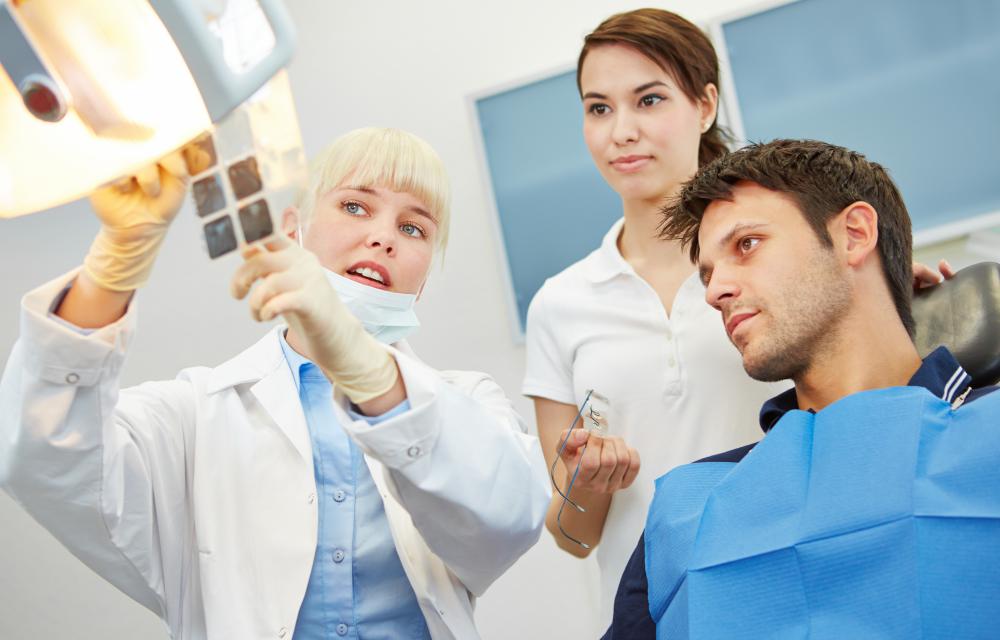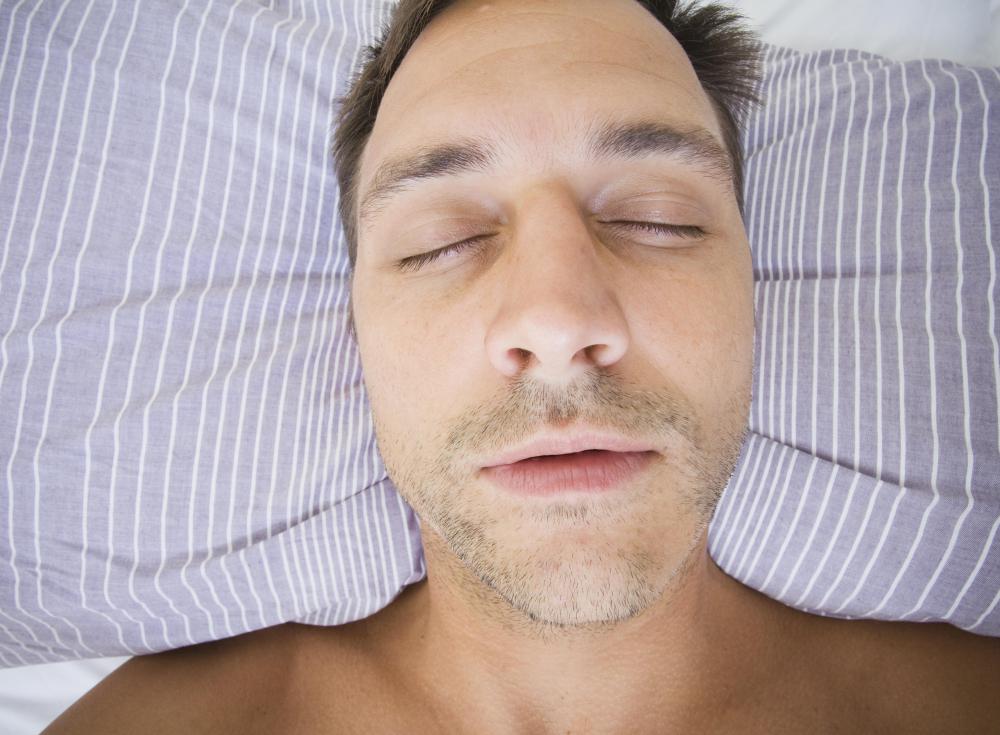At WiseGEEK, we're committed to delivering accurate, trustworthy information. Our expert-authored content is rigorously fact-checked and sourced from credible authorities. Discover how we uphold the highest standards in providing you with reliable knowledge.
What are the Different Types of Bruxism Treatment?
Depending on the severity and cause of the grinding, bruxism treatment can vary from practicing relaxation techniques and using muscle relaxants to advanced microsurgery and jaw repositioning. Managing stress can also alleviate some symptoms of bruxism. Wearing a fitted mouthpiece or completing orthodontic treatment may be necessary in other cases.
Grinding, clenching, or gnashing teeth together is technically called bruxism. When teeth are coming together with force in an up-and-down pressure or in a closed back-and-forth motion, damage to the teeth, jaw, and facial muscles can occur. Causes of bruxism typically fall into several categories.

An accident or one-time blow to the face and neck area can misalign the jaw function often controlled by the temporomandibular joint (TMJ). Times of high stress due to life events or work pressures can lead to a tendency to clench or gnash teeth during the day or while sleeping. Dental work can shift the bite of teeth so that higher teeth from a crown, for example, may start to self-adjust by grinding down upper or lower teeth to achieve a comfortable fit for the joints. Some who suffer from bruxism may not be able to recognize the start of the problem.

Bruxism treatment is complicated by first diagnosing the condition. Many discover the problem by noticing increased head, neck, and facial pain and then begin talking to doctors. Since a high number of patients generally grind during the night while sleeping, they may not consult a dental professional until tooth problems come about over time. Dentists and orthodontists typically are trained to identify grinding and pain sources based on the bite alignment and surface condition of the teeth, which can lead to a set of diagnostic tests and imaging to isolate the hot spots and begin a bruxism treatment plan.

Some who experience clenching and grinding are relieved of the symptoms as stress is reduced through lifestyle changes. Breathing deeply, massaging face and neck muscles, lessening caffeine and alcohol use, and taking frequent breaks from stressful activities can lessen and even eliminate the problem. More chronic forms of bruxism generally are treated in the mouth with the fitting of a specialized teeth or night guard to prevent the teeth from coming together until inflammation in the jaw, or TMJ, subsides. This course of bruxism treatment can be short-term or may be prolonged in stages over several years. Providing injection therapy—sometimes with the use of needle pressure alone—can release the muscle trigger points or spasms and provide complementary relief for those who wear appliances or mouth pieces.

Surgery for bruxism is an option for those who suffer from chronic pain or who may have experienced trauma to the facial region that needs repair. Surgical techniques have a varied success rate, with some patients reaching complete alleviation of symptoms, while others experience a return to grinding after surgery. In seeking bruxism treatment options, trying the least invasive methods first is typically advisable.
AS FEATURED ON:
AS FEATURED ON:














Discuss this Article
Post your comments